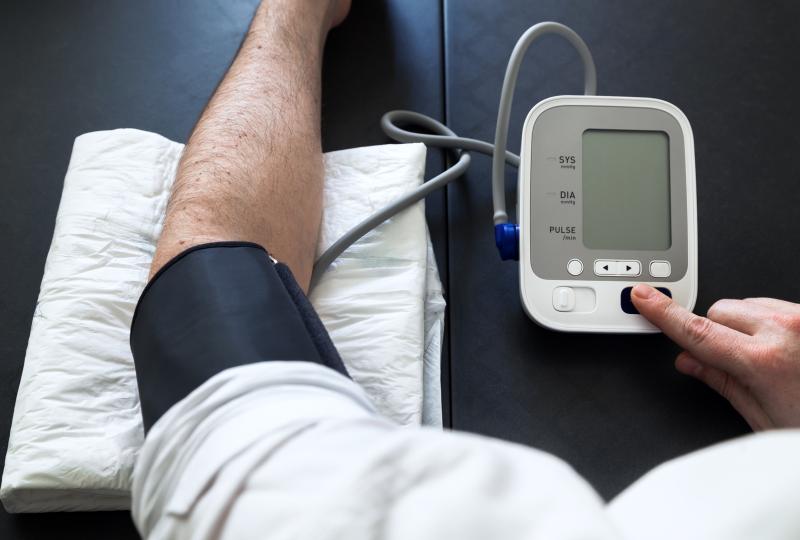 The new AHA guidelines has lowered the blood pressure limit to 130/80mmHg from 140/90mmHg. Does it really matter?
The new AHA guidelines has lowered the blood pressure limit to 130/80mmHg from 140/90mmHg. Does it really matter?Ambulatory blood pressure monitoring (ABPM) may be useful in assessing the risk of cerebral small vessel disease (cSVD) progression in elderly adults, a recent study has found.
A total of 233 participants (median age, 65 years; 43.8 percent female) were enrolled, in whom ambulatory systolic (SBP) and diastolic (DBP) blood pressure were measured. Cutoff points for determining good or poor control were 125/75 mm Hg over a 24-hour period, 130/80 mm Hg during the day, and 110/65 mm Hg at night. Progression of cSVD was qualitatively scored.
Around a quarter (26.2 percent; n=61) of the participants showed minor cSVD progression, characterized by just one magnetic resonance imaging (MRI) lesion. In comparison, 9.9 percent (n=23) showed marked progression, defined as having at least two MRI markers.
High ambulatory SBP and DBP at any time point correlated with an increased risk of new cSVD lesions, an interaction that remained true even after controlling for confounders. Night-time pulse pressure (PP) likewise emerged as a predictor of incident lesions.
Poor 24-hour DBP control at baseline (odds ratio [OR], 2.55, 95 percent confidence interval [CI], 1.36–4.78; p=0.004) as well as night-time PP (OR per 1-mm Hg increase, 1.03, 95 percent CI, 1.00-1.06; p=0.023) were significant predictors of cSVD progression.
“These results indicate that ambulatory BP, or equivalent measurements, should be obtained more routinely,” researchers said. “Future studies should combine ABPM information with other clinical variables to refine the risk prediction of cSVD progression.”